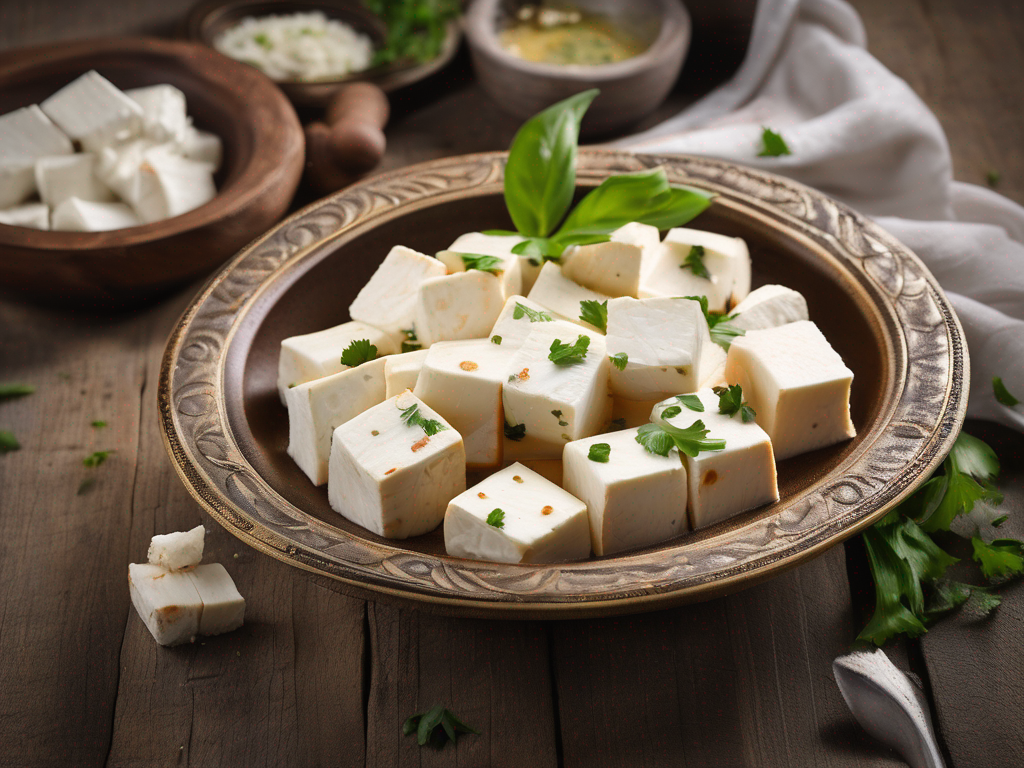
Signs that Paneer has Gone Bad
Get Your Free Food Safety Cheat Sheet
30 most common foods with instant answers. Print it and stick it on your fridge—completely free!
Signs that Paneer has Gone Bad
Paneer, also known as Indian cottage cheese, is a popular dairy product used in various dishes like curries, desserts, and appetizers. However, like any other perishable food item, paneer can go bad if not stored properly or consumed within a certain timeframe. In this blog post, we will explore the signs that indicate your paneer has gone bad and provide you with practical tips on how to store it correctly to prolong its shelf life. (Paneer)
How to Tell if Paneer is Spoiled
1. Check the Appearance
- Color: Fresh paneer is typically white or off-white in color. If you notice any discoloration, such as yellow or green spots, it's a clear sign that the paneer has spoiled.
- Texture: Fresh paneer has a firm and crumbly texture. If the paneer feels slimy, mushy, or excessively dry, it is no longer safe to consume.
2. Smell the Paneer
- Aroma: Fresh paneer has a mild, milky scent. If you detect a sour, ammonia-like, or pungent smell, it indicates that the paneer has gone bad and should be discarded.
3. Check the Expiry Date
- Packaging: Always check the expiry date mentioned on the packaging. Consuming paneer past its expiration date increases the risk of foodborne illness.
4. Mold Growth
- Visual Inspection: Inspect the paneer for any signs of mold growth. Mold can develop on the surface of paneer, especially if it has been stored improperly or for an extended period.
5. Taste Test
- Caution: While not recommended, if you are unsure about the paneer's freshness, you can perform a taste test. However, if the paneer tastes sour or unpleasant, it is best to discard it.
How to Store Paneer Properly
1. Refrigeration
- Temperature: Store paneer in the refrigerator at a temperature below 40°F (4°C) to slow down bacterial growth.
- Packaging: Keep paneer in its original packaging or airtight container to prevent it from absorbing odors from other foods.
2. Freezing Paneer
- Preparation: If you have excess paneer, consider freezing it. Cut the paneer into cubes or slices and store them in a freezer-safe container or zip-top bag.
- Thawing: When ready to use frozen paneer, thaw it in the refrigerator overnight to maintain its texture.
3. Avoid Moisture
- Drain Excess Water: Before storing paneer, pat it dry with a paper towel to remove excess moisture. Excessive moisture can promote bacterial growth and spoilage.
4. Use Clean Utensils
- Cross-Contamination: When handling paneer, use clean utensils and cutting boards to prevent cross-contamination with harmful bacteria.
5. Consume Promptly
- Freshness: Paneer is best consumed within a few days of purchase. Avoid keeping paneer for an extended period to ensure its freshness.
Conclusion
In conclusion, being able to identify the signs of spoiled paneer is crucial for maintaining food safety and preventing foodborne illnesses. By checking the appearance, smell, and texture of paneer, you can determine if it is safe to consume. Additionally, following proper storage practices, such as refrigeration, avoiding moisture, and consuming paneer promptly, can help prolong its shelf life.
Remember, when in doubt, it's always better to err on the side of caution and discard paneer that shows any signs of spoilage. By practicing good food safety habits, you can enjoy delicious and safe paneer dishes without any worries. Stay informed, stay safe, and savor the flavors of fresh paneer!
For more information on paneer and other food safety tips, visit our paneer page. (Paneer)
Authoritative Food Safety References
These agencies and university labs inform every tip and health precaution we publish.
USDA FoodKeeper – Cold Storage Guidelines
Official refrigerator, freezer, and pantry timelines maintained by the U.S. Department of Agriculture.
Visit USDA FoodKeeperFDA Produce Safety Rule & Grower Guidance
Field-to-fridge handling practices that prevent contamination of fruits, vegetables, and leafy greens.
Visit FDA Produce SafetyCDC Foodborne Illness Prevention Hub
Surveillance-backed guidance on pathogens, symptoms, and steps to reduce foodborne illness risk.
Visit CDC Food SafetyUC Davis Postharvest Technology Center
University research detailing optimal storage atmospheres for produce after harvest.
Visit UC Davis PostharvestPenn State Extension – Home Food Preservation & Safety
Peer-reviewed extension bulletins on safe canning, chilling, and reheating practices.
Visit Penn State ExtensionGet Your Free Food Safety Cheat Sheet
30 most common foods with instant answers. Print it and stick it on your fridge—completely free! Want more? Upgrade to the complete guide with 70+ foods.
Scan your food directly and get instant safety info using our AI-powered camera feature.